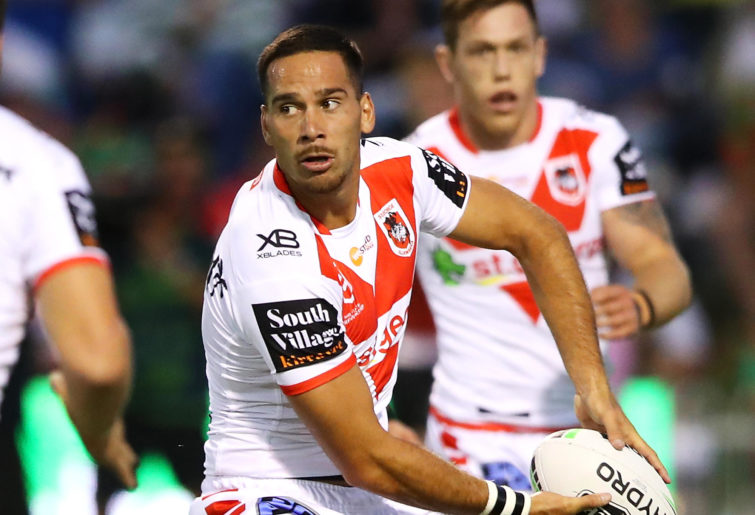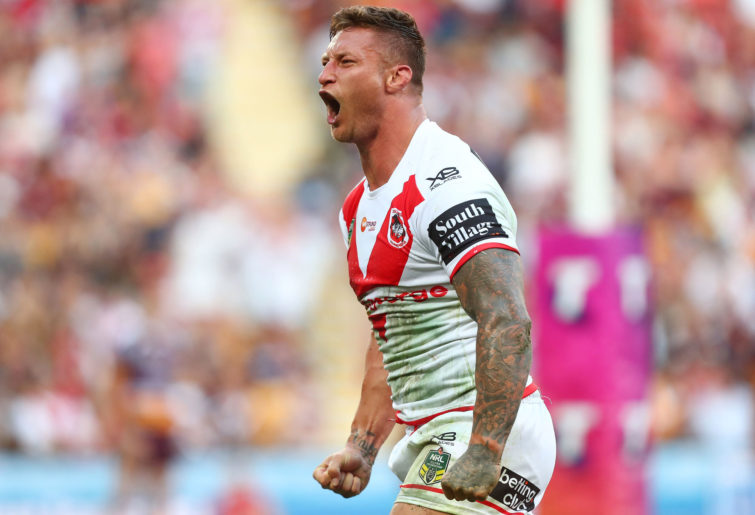Being an NRL coach is a tough gig. We’re only three rounds into the season and the job security of multiple coaches is already under scrutiny.
And once that red dot appears on your forehead, it can be almost impossible to shake it off. Just ask Michael Maguire.
To take some of the stress out of the situation, here are the six steps to survival that every NRL coach needs to read.
Step 1: Deny that a problem exists
This is not the start to the season you were hoping for. Your team is without a win after the opening few rounds of the competition and the media chatter has already started. If you find yourself in this situation, don’t panic. The first step in the process is easy – total denial.
Start by rolling out a few gems in the post-game press conference like “it’s still too early to judge”, “we had a really strong pre-season” or the old staple “the boys just need time to work on their combinations”.
Wayne Bennett is a master of this particular dark art – leaking information to certain individuals within the media and then denying the story when questioned about it publicly. The objective is to transform the narrative from ‘coach under pressure’ into ‘media beat up’.
The Wests Tigers find themselves in this very situation right now. When asked about Maguire’s job security, Tim Sheens deflected speculation with the kind of deft touch usually reserved for a Damien Martyn cover drive.
“It’s a bit early to be jumping the gun — it’s Round 2 for goodness sake, not Round 22. I’ve been around too long for knee-jerk reactions. I won’t be sucked into it.”
Todd Payten, I hope you’re taking notes.
Step 2: Tinker with the halves combination
Things aren’t running smoothly. You’re still losing games, not scoring enough points and your attack looks stale and listless. It’s not panic stations just yet, but change is needed. Just a little tweak here and a slight adjustment there.
Switching up the scrumbase is a good place to start. You’re not permitted to recruit better players to improve the team’s performance, so the next best thing is to rotate your existing players into unfamiliar positions.
Why not shift your halfback to five-eighth? He’s got a bigger frame and a superior running game anyway – a natural 6. And while you’re at it, give that young centre a crack at fullback. He played there in high school and as your best attacking weapon, it’s important that he gets his hands on the ball as much as possible.
This tactic was the bedrock of Paul McGregor’s tenure at St George Illawarra. ‘Mary’ used to meddle with combinations from week to week and even within games. By the time Corey Norman’s ill-fated stint at the Dragons had ended, he’d filled more positions than The Karma Sutra.

Corey Norman (Photo by Mark Kolbe/Getty Images)
Kevin Walters picked up where Mary left off, with the Broncos coach utilising eight different halves pairings across 25 rounds of NRL football. No duo was given more than five games together to build cohesion, but the constant changes kept Kevy one step ahead of Peter Badel’s poison pen.
But be careful not to take things too far. If you find yourself selecting an ageing Jake Granville at fullback – stop, take a deep breath and proceed to Step 3.
Step 3: Fire your assistant coach
Things aren’t looking good. Performances haven’t improved and you’re still losing games. You’re getting more airtime on NRL 360 than Lara Pitt and the fans are baying for blood.
It’s time to take things up a notch.
Fire an assistant coach. Any assistant coach will do. If Shane Flanagan is on your staff, send him packing. If not, seek out the next most villainous character and he can tell his story walking. It might come across as cold and callous on the surface, but it’s all about how you position the change.
For argument’s sake, say that your defence looks like you’re fielding 13 Sam Walkers. Fire the defensive coach and let the media know that you’re personally going to get much more involved. You’ve got a defensive coaching background from your time at the Illawarra Cutters. That sounds plausible. No one will check it.
Just like the rugby league media, fans of a losing team don’t look too deeply into the reasons behind change. They see you firing Stephen Kearney, a great bloke with a 35 per cent win record, and they’ll view it as a positive move.
Step 4: Blame yourself
Blaming someone else didn’t work, so it’s time to accept some responsibility. This is better known as the George Costanza, and it requires you to stare down the barrel of the Channel Nine camera and sheepishly admit “It’s not you, it’s me.”
The benefits of this are two-fold. Firstly, you take the pressure off your players and win back a few brownie points in the change rooms. Make sure you drop a few choice sound bites like, “I’ve got to do a better job of preparing this team.” It will pop up on the boys’ Instagram feed on the bus ride home, and they’ll appreciate you for taking the heat.
Secondly, it buys you a little time with the fans. You’ve finally admitted that the team isn’t firing under your current approach, but you’re committed to making it work. It wouldn’t hurt to mention that you’re changing things up at training or giving the senior players more responsibility.
And if all else fails, consider organising a mid-week team camp in Kiama.
Step 5: Passive aggressively white-ant the general manager
If you’ve made it to Step 5, then you’re really feeling the heat. This is what we call the Anthony Seibold zone, and it’s where your every decision is being questioned. From team selections to your daily coffee order, nothing is sacred from the pages of the Daily Telegraph.
It’s time for major action. To this point, you’ve worked in harmony with your general manager of football. Recruitment and retention decisions have been a joint exercise and the GM has been your sounding board throughout this difficult period. He trusts you – now it’s time to exploit that trust.
Repeat after me: this isn’t my team. These aren’t my players. Just look at my track record and you’ll see the kind of players that fit my system. I inherited this mess and I’m doing my best to make it work.
Look no further than Anthony Griffen at the Dragons who has replaced the likes of Cameron McInnes and Tariq Sims with some veterans he coached decades earlier.

Tariq Sims. (Photo by Chris Hyde/Getty Images)
If you’re having trouble getting started with Step 5, a good tip is to find yourself a malleable journo and then start leaking like you’ve had too many schooners. Or, better yet, hire someone at Fox League or Channel 9 as your agent and they’ll broadcast your dirty laundry live on air.
Step 6: Publicly throw your star player under the bus
This is the last roll of the dice. As the old saying goes, “it’s easier to get rid of the head coach than it is to get rid of the players”. But that shouldn’t stop you from trying.
Pick your target, call a press conference and don’t hold back.
It’s best to aim high in this situation. A senior player or a prominent member of the spine. They’ll have a stronger following on social media, so when they hear Paul Kent siding with your position, their petulant comments will reach a much larger audience.
Quick tip: make sure your kids show you how to do a ‘screenshot’ on your iPhone.
But it’s important to get the balance right. Todd Payten went too big too early and only managed to offend his best player. Jason Taylor dropped his captain to reserve grade and we all know how that ended for him. Best to pick a fight you know you can win.
What’s beyond Step 6 you might ask? No one really knows. No NRL coach has ever made it beyond Step 6.
But if you tune in to Tales From Tiger Town this season, you might just find out.






























































































